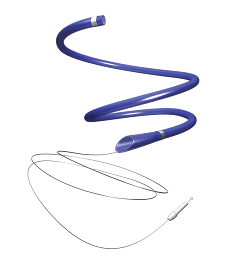
MIVI Neuroscience has announced that it has completed enrolment in the EVAQ clinical trial to assess the safety and effectiveness of the Q revascularisation system for the treatment of acute ischaemic stroke.
The EVAQ trial has enrolled 121 patients at 17 centres globally. Data from the study will be used as part of an application to the US Food and Drug Administration (FDA) for market clearance of the Q device in the USA, a MIVI press release states.
The Q revascularisation system combines the company’s Q aspiration catheter with its Super 90 guide catheter, and is designed to provide up to twice the aspiration power of traditional aspiration catheters—and features simple and fast setup, prep, and operation, MIVI claims.
“While aspiration catheters are used in nearly every stroke treatment, their design has not significantly changed over the last decade,” said Lucas Elijovich (Semmes-Murphey Neurologic Institute, Memphis, USA), EVAQ US principal investigator. “The Q aspiration catheter is a novel design that delivers greater aspiration power without increasing the size of the catheter tip. This may be especially advantageous in smaller vessels, where large-bore catheters may not safely access and single-lumen catheters offer limited efficacy.”
“It is only through clinical research like EVAQ and innovative technologies like the Q aspiration catheter that stroke treatment will continue to advance,” added Christophe Cognard (Hôpital de Purpan, Toulouse, France), French principal investigator. “We are proud to contribute to the study with our US colleagues and look forward to the results of the trial.”
“We are grateful to all of our investigators for their contributions and dedication to the EVAQ trial,” said Bob Colloton, CEO of MIVI. “The results of this study will allow MIVI to expand our commercial footprint beyond our current European success and into the important US market, strengthening the foundation for future unique stroke-treatment devices.”













